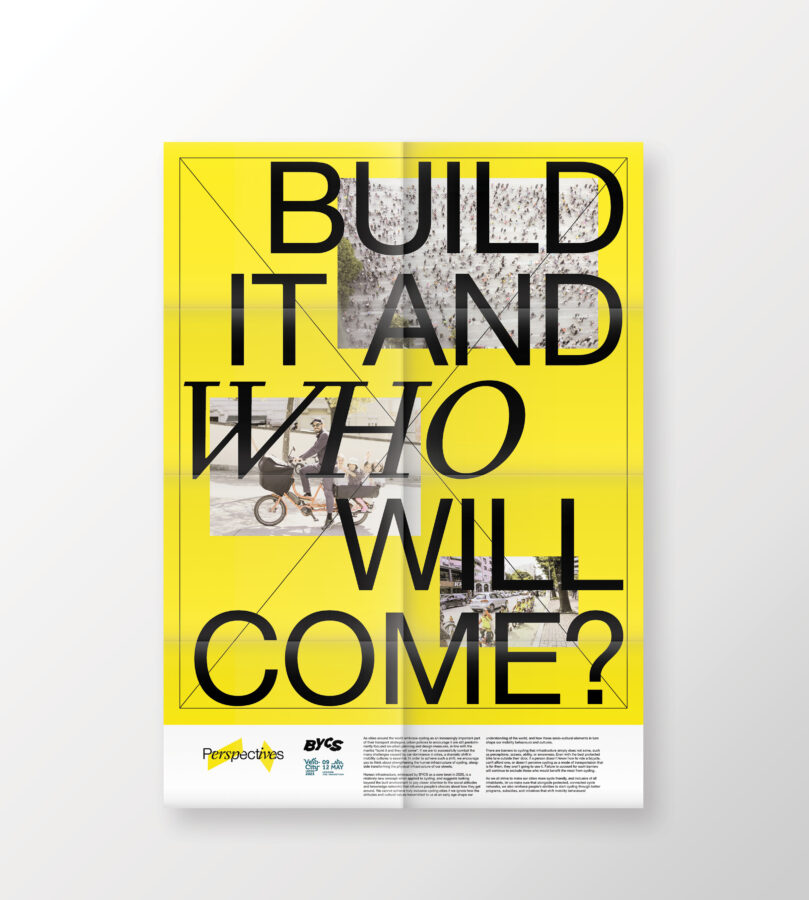Introduction:
Caroline Cerfontaine works at the European Cyclists’ Federation as the Velo-city Director in charge of ECF’s annual flagship event: Velo-city, the world cycling summit. Prior to that, she worked at the International Association of Public Transport in 2006, as Unit Leader for Mobility Governance. Velo-city is where advocates, cities, decision- and policy-makers, researchers, and industry leaders meet to shape the future of cycling. Velo-city plays a valuable part in promoting cycling as a sustainable and healthy means of transport for all. The conference offers a knowledge-exchange and policy-transfer platform to the growing number of more than 1400 Velo-citizens from over 60 countries.
–
The theme of this year’s Velo-city is “leading the transition”. To introduce this issue of Perspectives, could you expand on this, and highlight how we can ensure this transition is a “just transition”?
For years the world has been falling from one crisis to the next, with the climate crisis endangering the very fundamentals of our existence.
What future do we want to live in? The transport sector is responsible for 25% of all CO2 emissions. Cycling together with other sustainable modes are key to reduce air pollution and the dependence on fossil fuels. Over decades, people have gradually accepted the almost complete takeover of public space by car traffic. Cycling and walking have been marginalised, children can no longer play on the streets, and open public spaces are few and far apart. Yet it is precisely the views of local people, their everyday experiences, their living environment and their needs that should provide the framework for decisions and political action. Disadvantaged communities are more likely to live in areas with lower air quality, with more transport poverty, next to big roads separating them from amenities. The transition to sustainable active mobility is a tool to foster social justice. Prioritising transport systems for cycling rather than for heavy privatised motor traffic means democratising the transport sector and making mobility accessible to all. The design of our future mobility systems and the fair allocation of public space are crucial for our societies. We need societies that will manage resources efficiently and be resilient enough to overcome future crises.
Many solutions exist and have been implemented. We can observe these changes throughout the world and at their source you will always find leaders that were there to drive change forward. We need idea generators who recognise the opportunities of the future, planners who turn ideas into projects and strong personalities who lead the way with
courage and enthusiasm.
Let’s lead this transition together!

Image: Velo-city, Leipzig Stadt
–
Editorial:
Lucas Snaije is the Research & Advocacy Manager at BYCS, and provided the editorial for this special edition of Perspectives.
Build It and Who Will Come?
As cities around the world embrace cycling as an increasingly important part of their transport strategies, urban policies to encourage it are still predominantly focused on urban planning and design measures, in line with the mantra “build it and they will come”. If we are to successfully combat the many challenges caused by car dominance in cities, a dramatic shift in mobility cultures is essential. In order to achieve such a shift, we encourage you to think about strengthening the human infrastructure of cycling, alongside transforming the physical infrastructure of our streets.
Human infrastructure, embraced by BYCS as a core tenet in 2020, is a relatively new concept when applied to cycling, and suggests looking beyond the built environment to pay closer attention to the social attitudes and knowledge networks that influence people’s choices about how they get around. We cannot achieve truly inclusive cycling cities if we ignore how the attitudes and cultural values transmitted to us at an early age shape our understanding of the world, and how these socio-cultural elements in turn shape our mobility behaviours and cultures.
There are barriers to cycling that infrastructure simply does not solve, such as perceptions, access, ability, or awareness. Even with the best protected bike lane outside their door, if a person doesn’t know how to ride a bicycle, can’t afford one, or doesn’t perceive cycling as a mode of transportation that is for them, they aren’t going to use it. Failure to account for such barriers will continue to exclude those who would benefit the most from cycling.
As we all strive to make our cities more cycle friendly, and inclusive of all inhabitants, let us make sure that alongside protected, connected cycle networks, we also reinforce people’s abilities to start cycling through better programs, subsidies, and initiatives that shift mobility behaviours!

Image: BYCS

